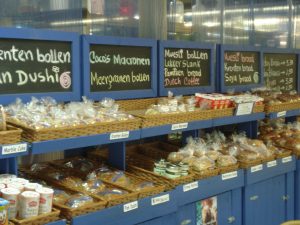68 Latin America and the Caribbean (LACAR): Cultural Geography I – Papiamento Language
 Language is a core element of culture. Without shared language, the ability to communicate is impossible, thus eliminating the opportunity for people to belong together as a group or as a nationality (or in the terms of political geography, as a nation). Often new languages are learned in order for people to communicate in different countries, for purposes of travel, trade, and diplomacy. A second language that is favored for these purposes is known as a lingua franca; in fact, English commonly works in this way internationally.
Language is a core element of culture. Without shared language, the ability to communicate is impossible, thus eliminating the opportunity for people to belong together as a group or as a nationality (or in the terms of political geography, as a nation). Often new languages are learned in order for people to communicate in different countries, for purposes of travel, trade, and diplomacy. A second language that is favored for these purposes is known as a lingua franca; in fact, English commonly works in this way internationally.
In other settings, languages evolve or even merge elements in order for different peoples to live together in the same location. Examples here include Creole languages that are mixtures of African languages and usually European languages. Typically, these Creole languages were developed as the result of colonialism. Papiamento is one such Creole language.
Papiamento (sometimes Papiamentu) is a Creole language spoken in the Netherlands Antilles. (Note the Regional Geography discussion of the political standing of Caribbean islands of the Netherland Antilles.)
While Spanish presence in the Caribbean began with the voyages of Christopher Columbus, other countries soon followed in seeking land and riches. Portuguese involvement here is clear, perhaps a bit of British involvement; however, Dutch presence began with possession in 1634 and was maintained through to the current flexible political and economic connections.
The term Papiamento is derived from the Portuguese and Spanish shared casual term papia or papear, meaning to talk.
Contributions to Papiamento language are numerous. In Curaçaofor instance, the native Caquetio peoples were present in modest numbers when Spanish explorers first arrived in 1499. As often was the case, exploration brought conquest. Undoubtedly, elements of the native language were used in initial conversation between Caquetio and Spanish people; however, there is little of this native tongue in modern Papiamento.
In 1634 Dutch forces captured Curaçao, bringing control, as the Dutch West Indies Company, that also entailed linguistic and cultural elements. The Dutch soon lost their territories in Brazil, increasing Curaçao’s importance for Dutch presence in the region. In fact, there was some migration of people from Dutch Brazil to Curaçao. A curious bit of history is that this flow of people included numerous Sephardic Jews.
For this merger of languages to fall into the Creole category, African languages must be part of the mix. Historically, this occurred through the slave trade. The European slave trade from Africa to the New World has been estimated a 12.5 million people. Over those many years, perhaps a half million of these slaves were brought by the Dutch to Curaçao, some to pass on to other locations, but some to stay. Thus, we have the introduction of African languages to Curaçao, filtering as well to other Dutch sites in the Caribbean. These Dutch transits as well as slaves from areas of Portuguese influence in the Cape Verde islands and the continental Guinea-Bissau region contributed substantially to the development of Papiamento.
Modern-day Curaçao uses Papiamento as one of its official languages, along with Dutch and English. In Aruba, it is Papiamento and Dutch. In Bonaire, Dutch with regional Papiamento. The Aruban version of Papiamento is considered one dialect, as slightly different than that used in Bonaire and Curaçao.

Take a chunk each from Spanish, Portuguese, and Dutch. Add a sprinkle of English, Bantu, Wolof, Arawak, and other languages. Blend over a few hundred years. Season to make it tasty and useful for residents of the ABC islands of that original Netherlands Antilles. It is Papiamento. It is fun for linguists.
Did You Know?
A key word in Papiamento language is dushi. This word has several meanings and is used frequently in the islands. When you refer to food, sushi means tasty. However, sushi also can mean babe, a slang term of affection for a man’s woman or even casually to refer to a woman. This may be more common if the woman is sexy, but curiously it can also be applied to an attractive man. Affectionately, Dushi Korsou is a proud reference to the island Curaçao and its way of life.
Look it up. How would dushi in Curaçao be alike or different from Dutch words gezellig, leuk, lekker, and mooi? Perhaps some of each, but certainly some leuk and mooi.
Cited and additional bibliography:
“5 Different Ways to Use the Word Dushi on Curacao.” n.d. Www.Avilabeachhotel.Com. Accessed May 22, 2020. https://www.avilabeachhotel.com/blog/cultural-curacao/5-different-ways-to-use-the-word-dushi-on-curacao.
mroczknj. 2009. Market in Aruba. https://tinyurl.com/arubamarket. Attribution-NonCommercial-NoDerivs 2.0 Generic (CC BY-NC-ND 2.0).

